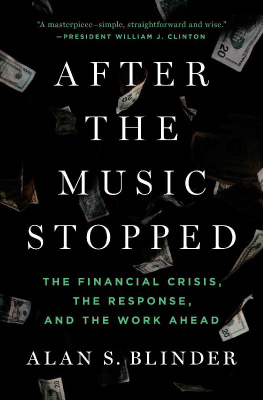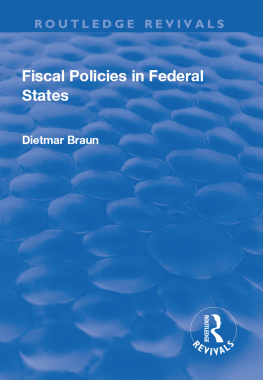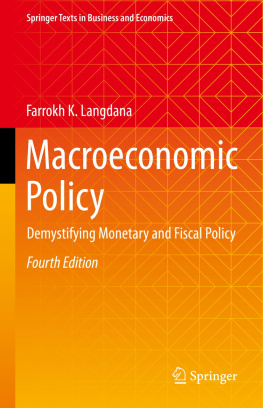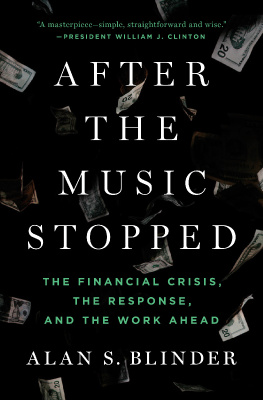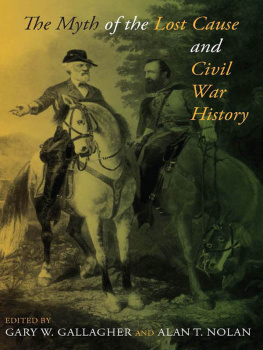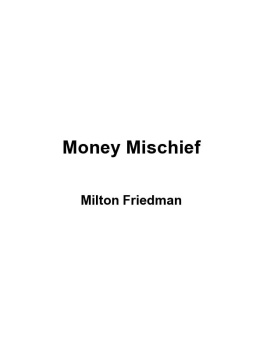Alan S. Blinder - A Monetary and Fiscal History of the United States, 1961-2021
Here you can read online Alan S. Blinder - A Monetary and Fiscal History of the United States, 1961-2021 full text of the book (entire story) in english for free. Download pdf and epub, get meaning, cover and reviews about this ebook. year: 2022, publisher: Princeton UP, genre: Politics. Description of the work, (preface) as well as reviews are available. Best literature library LitArk.com created for fans of good reading and offers a wide selection of genres:
Romance novel
Science fiction
Adventure
Detective
Science
History
Home and family
Prose
Art
Politics
Computer
Non-fiction
Religion
Business
Children
Humor
Choose a favorite category and find really read worthwhile books. Enjoy immersion in the world of imagination, feel the emotions of the characters or learn something new for yourself, make an fascinating discovery.

- Book:A Monetary and Fiscal History of the United States, 1961-2021
- Author:
- Publisher:Princeton UP
- Genre:
- Year:2022
- Rating:5 / 5
- Favourites:Add to favourites
- Your mark:
- 100
- 1
- 2
- 3
- 4
- 5
A Monetary and Fiscal History of the United States, 1961-2021: summary, description and annotation
We offer to read an annotation, description, summary or preface (depends on what the author of the book "A Monetary and Fiscal History of the United States, 1961-2021" wrote himself). If you haven't found the necessary information about the book — write in the comments, we will try to find it.
Alan S. Blinder: author's other books
Who wrote A Monetary and Fiscal History of the United States, 1961-2021? Find out the surname, the name of the author of the book and a list of all author's works by series.
A Monetary and Fiscal History of the United States, 1961-2021 — read online for free the complete book (whole text) full work
Below is the text of the book, divided by pages. System saving the place of the last page read, allows you to conveniently read the book "A Monetary and Fiscal History of the United States, 1961-2021" online for free, without having to search again every time where you left off. Put a bookmark, and you can go to the page where you finished reading at any time.
Font size:
Interval:
Bookmark:
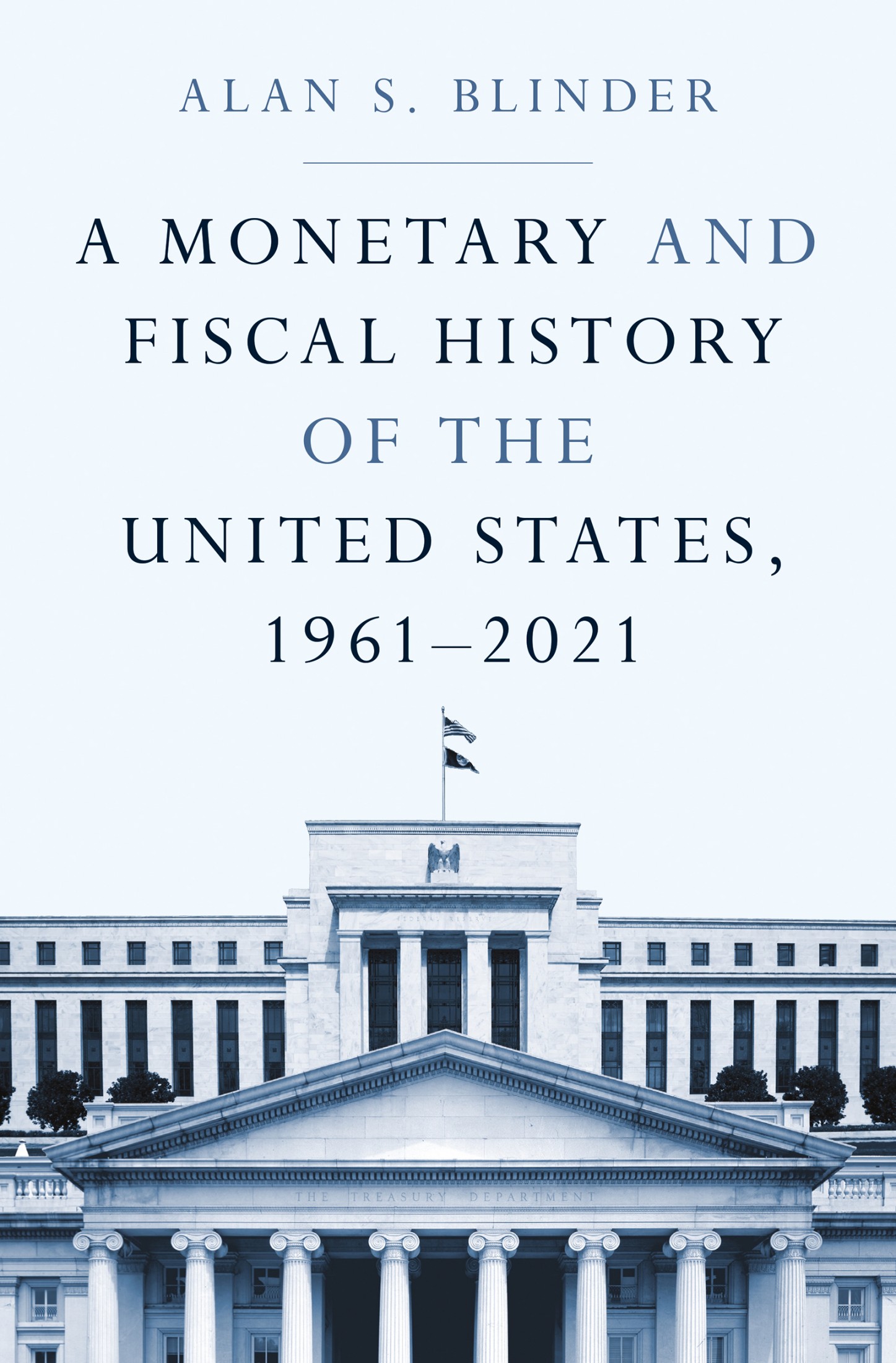
A MONETARY AND FISCAL HISTORY OF THE UNITED STATES, 19612021
A Monetary and Fiscal History of the United States, 19612021
Alan S. Blinder
PRINCETON UNIVERSITY PRESS
PRINCETON AND OXFORD
Copyright 2022 by Alan S. Blinder
Princeton University Press is committed to the protection of copyright and the intellectual property our authors entrust to us. Copyright promotes the progress and integrity of knowledge. Thank you for supporting free speech and the global exchange of ideas by purchasing an authorized edition of this book. If you wish to reproduce or distribute any part of it in any form, please obtain permission.
Requests for permission to reproduce material from this work should be sent to
Published by Princeton University Press
41 William Street, Princeton, New Jersey 08540
99 Banbury Road, Oxford OX2 6JX
press.princeton.edu
All Rights Reserved
Library of Congress Control Number: 2022936806
ISBN 9780691238388
ISBN (e-book) 9780691238395
Version 1.0
British Library Cataloging-in-Publication Data is available
Editorial: Joe Jackson, Josh Drake
Jacket Design: Karl Spurzem
Production: Erin Suydam
Publicity: James Schneider, Kate Farquhar-Thomson
Those who cannot remember the past are condemned to repeat it.
GEORGE SANTAYANA
These famous words have been repeated so many times since George Santayana wrote them in 1905 that they have become a clich. But remember, clichs often capture important grains of truth. Mark Twain was probably more accurate when he (allegedly) asserted that history doesnt repeat itself, but it often rhymes. Sad to say, many economists and policy makers are not very skilled at picking up rhyming schemes. This book is intended to help.
During fifty-plus years as an academic economist, one thing I have learned is that my fellow economists have a remarkable propensity for forgetting or ignoring the past. Such lapses of memory may not be terribly problematic in the world of pure theory. After all, scientific progress is rarely made by looking backward, the most reliable route to academic success is jumping onto the latest bandwagon, economic theory runs in fads, and many fads dont last long. But forgetfulness in the world of policy can lead to errors, maybe even to grievous errors with serious consequences, which, I suppose, is what Santayana had in mind when he chose the verb condemned.
Policy makers and their economic advisers must resist fads. But they must also avoid getting trapped in the past. Walking that fine line is one of the key ways in which the science of economics merges into the art of economics. Sometimes the merger works well, but often it doesnt. And thats part of the story I tell in these pages.
This book is light on economic theory, and equations are rarer than dodo birds. However, a number of the theoretical and empirical controversies that have surroundedand sometimes envelopedmonetary and fiscal policy find natural homes here. Furthermore, part of the evolution of thought on macroeconomic policy involves or was even spurred by developments in theory. So, several aspects of macroeconomic theory necessarily play roles in the historical narrative.
That said, this book is a work of history, not of theory, so I studiously avoid sojourns into theory for its own sake. Rather, I limit myself to theoretical developments that had serious bearings on policy making. So, for example, you will find much in these pages about monetarism, rational expectations, and even supply-side economics but little about such popular (among academic economists!) topics as Ricardian equivalence, time inconsistency, and the fiscal theory of the price level. As far as I can tell, those (and other) topics had little or no bearing on actual policy making.
The worlds of ideas and policy have always interacted strongly, and the sixty-year period covered in this volume is no exception. Developments in the world of ideas (usually coming from academia) sometimes have major impacts on the world of policy. Developments in the world of events (including policy events) sometimes have major impacts on thinking in the academy. This two-way interaction is a natural and necessary subtheme of this book, and so is its opposite: cases in which policy makers resisted sensible ideas and academics ignored reality.
A second, more important, subtheme is the interaction between policy and politics. In the realm of monetary policy, where the Federal Reserve normally sets short-term interest rates and its other policy instruments independently, politics has mostly been a sidebar issuethough with some notable exceptions (e.g., Richard Nixon and Arthur Burns). Technocrats, mostly economists, make the policy decisions.
But in the realm of fiscal policy, where publicly debated budget issues are at the forefront, politics rules the roost. Fiscal policy decisions are made by elected politicians, though hopefully informed by facts and by sound economic thinking. These politicians are guided by forms of logic that are alien to economistsIve called them political logic to distinguish them from Aristotelian logic (Blinder 2018). Nonetheless, no history of fiscal policy can avoid delving, sometimes deeply, into the politics of the day. Writing a history of fiscal policy in America that ignored the politics would be leaving out of the play not just the Prince of Denmark but also Ophelia, Laertes, and Polonius.
So, you will find substantial political discussion of fiscal policy in these pages, though I emphasize the economics far more than the politics. In that regard, I should level with the reader by stating right up front that I have long been a center-left Democrat. However, in writing this book (unlike in writing my op-ed columns) I have tried hard to relegate my personal political views to second or third fiddle. Where there were controversies in policy making, I dont shy away from the issues. Instead, I try to give the reader a sense of the arguments on both sidesthough without hiding my own views.
The book is designed to serve two audiences. One is my fellow economists or at least those of them who wish to learn some of the lessons of history, lessons that their graduate educations probably did not teach them and that they, in turn, probably dont teach to their students. Such readers may browse selected portions of the book and then place the volume on their bookshelves for future reference.
The other audience is the general reader who is interested in economic policy, or at least in macroeconomic policy. How does the past shape todays attitudes, options, and debates over monetary and fiscal policy? What worked and what didntand why? For those readers especially, the book is arranged chronologically, not thematically, starting in 1961 and continuing to the end of 2021. It is meant to be read as one continuous story, a nonfiction story to be sure.
The title is not accidental but rather an intentional homage to Milton Friedmans and Anna Schwartzs monumental A Monetary History of the United States, 18671960 (Princeton University Press, 1963), from which the doctrine of monetarism and our current view of the Great Depression, among other things, derives. Two changes from their title are obvious. First, I pick up the story exactly where they left offin 1961. Although I am far from a monetarist, I have no desire to engage in debate with the ghosts of Friedman and Schwartz. This work is in no sense a sequel to theirs.
Font size:
Interval:
Bookmark:
Similar books «A Monetary and Fiscal History of the United States, 1961-2021»
Look at similar books to A Monetary and Fiscal History of the United States, 1961-2021. We have selected literature similar in name and meaning in the hope of providing readers with more options to find new, interesting, not yet read works.
Discussion, reviews of the book A Monetary and Fiscal History of the United States, 1961-2021 and just readers' own opinions. Leave your comments, write what you think about the work, its meaning or the main characters. Specify what exactly you liked and what you didn't like, and why you think so.

